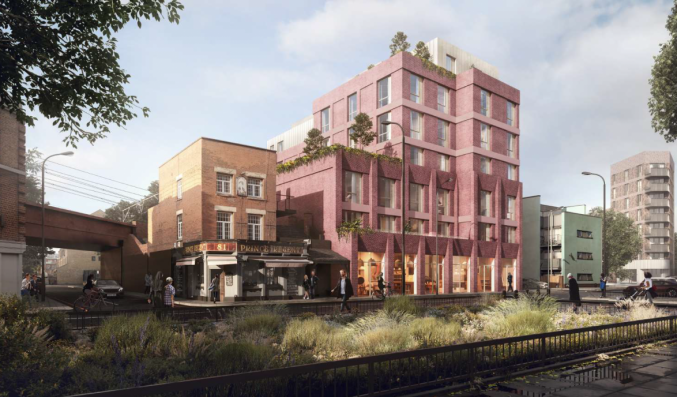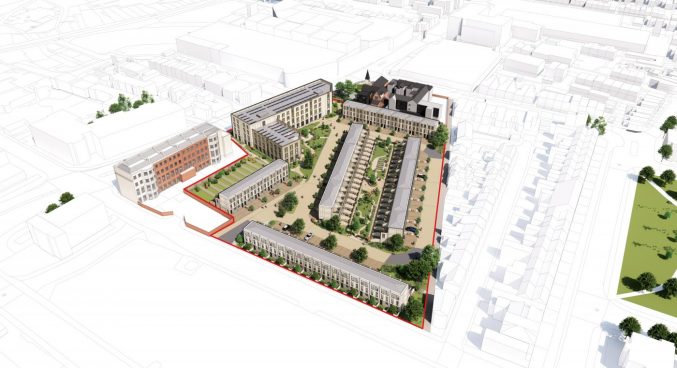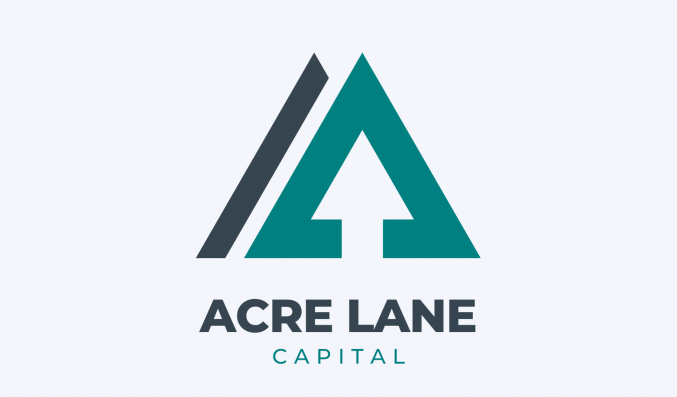A bridging lender’s guide to modular construction
By Hannah Duncan

The UK has long been suffering from a housing shortage. Pent-up demand has bloated house prices to nearly eight times the average income[1]. Meanwhile, global materials shortages and climate change concerns are bringing traditional construction methods to a grinding halt. The UK is consistently missing it’s 300,000 new homes a year target, further blowing up demand, spelling bad news for everyone … Including bridging lenders.
But there’s light at the end of the tunnel. Prefabricated homes, once such a dirty word, have shaken off their post-war, clammy, and low-quality image. They now represent a cutting-edge beacon of hope for the industry, heralding a new and more sustainable way of getting homes built.
To help you get ahead and underwrite the buildings of the future, here’s a five point guide to modular construction.
Contents:
- What is modular construction?
- What are the main benefits of modular construction for lenders?
- What are the main disadvantages of modular construction for lenders?
- How can bridging lenders and other underwriters overcome challenges to support modular construction?
- What is the future of modular construction?
1. What is modular construction?
Modular construction is when components of a building are created off-site, in a factory. When completed, they can be transported to the site, assembled, and bolted together in a matter of days. It’s an efficient way to create more homes, in less time and with lower costs.
Modular construction falls into the alternative category of “Modern Methods of Construction” (MMC). It can also be referred to as 3D volumetric construction.

2. What are the main benefits of modular construction for lenders?
There are many benefits to modular construction, including shorter builder times, lower costs and less impact on the environment.
Time-saving
As CFO & Group Development Director at Modulous, Sarah Hordern explains, “There are various key benefits. The first is speed. Offsite manufacturing can help a project complete in half the time”. For lenders, this is offers extraordinary advantage. “They get their money back more quickly and can recycle it elsewhere and project risk is reduced”, Hodern continues. “Housing associations or institutional investors building for rent can generate rent more quickly, which drives their IRRs. Everyone wins”.
So how is it that modular construction can save so much time, compared to traditional builds? Two of the main reasons are that the structures are built inside, often in tandem with the site clearance:
- No need to worry about the weather
Here in the UK, rainfall extends the traditional construction timeframe by an additional 21%[2] on average. However, with a modular approach, the bulk of the work is done inside a factory.
- Less hold-ups
Unlike traditional builds, with modular construction, different stages of work can be done in tandem. So, for example, the different modules can already be underway as the site is being cleared, and foundations are laid. This dramatically cuts the overall time by 30% to 50%[3]. Plus, if one stage is delayed, it does not mean that all the others will be delayed too.
This helps reassure lenders. As CEO of Atelier Capital, Chris Gardner elaborates, “Modular construction allows developers to deliver homes quickly and to a consistent standard”.
Cost-saving
Less time normally means less costs, and modular construction is no different. It’s estimated that off-site construction work saves up to 25% of the cost of traditional builds.
- Assembly line production
This is partly because the process is extremely streamlined. Following Henry Ford’s assembly line production model, the modules can be manufactured at speed. What’s more, workers and processes even become more efficient with time, saving on costs.
- Less waste
Perhaps one of the main cost savings of modular builds is the significant reduction in waste materials. In the UK alone, 400[4] million tonnes of construction material are used by the industry each year, and one quarter of this will end up as costly waste. Builders are literally throwing away money. The problem is so extreme that it accounts for a third of the nation’s entire landfill waste. By contrast, modular builds cut down waste right at the early design stage.
Planet-saving
As Hordern explains, “Broader benefits around cost control, programme certainty and reduced risk are also highly appealing but above all, the most important benefit has to be around ESG (Environmental, Social, Governance factors)”.
- Less waste
As we covered above, less waste is a great way to reduce costs. And, more importantly, it’s also a useful way to reduce our impact on the environment. While waste for traditional builds currently makes up between 25% and 30% of the materials used, for modular construction it’s just a teeny 1.8%[5]. This helps us to protect our environment. It also gets the maximum use out of materials such as timber, so that more trees can be spared in the future.
- Re-using and re-cycling
Modular buildings are designed to be more flexible in usage than traditional builds, and it’s easier to take them apart and use them again somewhere else. In addition, many architects will try to incorporate eco-friendly materials, to help make modular builds even more sustainable.
- Less pollution
In addition, as the modules are produced away from site, disruption to nature and noise pollution are kept to a minimum too. Noise pollution can often lead to complaints, which can be expensive and timely to resolve. With modular builds, this risk is significantly cut down, as the building can be assembled in a matter of days with minimum disruption.
- Less carbon emissions
Greenhouse gas emission from the manufacturing and construction sector accounted for 12% of the UK’s total[6]. However, modular construction can reduce this. Their streamlined process and limited transportation of means they emit less carbon into the atmosphere than traditional builds. One study found that the amount of energy used to construct a modular building is 67% less than for a traditional build[7], amounting to a 40% reduction in carbon emissions[8].
One manufacturer who embraces this whole-heartedly is Modulous. They are blending technology with ESG to create more eco-friendly modular builds. “Because our entire system combines a scalable software platform and a bespoke kit of parts that can be flexed to fit a vast array of scenarios, we can easily articulate the real carbon footprint of each component”, Hordern elaborates.
“Such data is unheard of in traditional construction. We know that, pretty soon, companies will be taxed properly on carbon and as the concept of a “carbon allowance” takes hold, the need to be able to genuinely measure every little detail increase exponentially”. The platform behind monetising carbon emissions, is known as the UK Carbon Emission Trading System. Following in the footsteps of the EU, the UK government is applying a cap-and-trade system for all energy-intensive companies. The Climate Change Committee[9] indicated in their recent paper that construction firms should have both a carbon tax and fall into the trading system. If this becomes the case, emitting carbon could become hugely expensive, and may even bankrupt firms who do not embrace carbon-reducing methods.
- Better energy efficiency
Another advantage which is both good for the world, as well as the wallet, is the energy efficiency of modular builds. “Thermal performance can be amplified, enabling homes to operate around net zero even today”, elaborates Hordern. “This not only future-proofs investment from building code changes but delivers a substantial reduction in operating costs with power savings of c. £700 per year for a standard one bedroom flat”.

Other benefits for lenders
Modular builds are relatively new, and for now, there can be a shortage of lenders who will underwrite them. However, for the few that do, there are many advantages.
- Less surprises along the way
The nature of a modular building means that it is likely to be repeated many times. Lenders and surveyors have the luxury of visiting a similar or show property before the build takes place. Of course, this cannot be done in the same way with a traditional bespoke build. This gives them the chance to make enquires, ask questions, or even request small tweaks.
- Reducing the lending firm’s carbon footprint
“Because modular components are precision engineered to fine tolerances”, explains Gardner. “They offer exceptional insulation and energy saving efficiencies. [The] carbon footprint is therefore less pronounced than in an old fashioned bricks and mortar home.”
Because modular builds are a more sustainable construction method, lenders can reduce their negative impact on the world by underwriting this new technology. As Gardner discussed in a recent interview, “Stop talking about going green and start underwriting new technology”, modular builds are one of the best ways for lenders to help protect the environment.
- Taking advantage of the first-to-market perks
Modular homes are clearly going nowhere; they’ve long been hailed as the UK’s answer to the unaffordable housing crisis. And in a recent paper, “Build Homes, Build Jobs, Build Innovation”, industry experts are calling out to government to build 75,000 new manufactured homes each year by 2030. Lenders who can get ahead in the race now, establishing themselves as the dominant player, could benefit from enormous business opportunities.
3. What are the main disadvantages of modular construction for lenders?
While there are many advantages to modular builds, there are some disadvantages too.
- Higher risk of fire spreading
Some underwriters have highlighted that because the builds are often made from Timber, they can catch and spread fire more easily. What’s more, as many materials are designed to look like a different material (such as stone or wood), firefighters might struggle to put out flames on some surfaces.
- Risk of repeated mistakes
The assembly line process of building pre-fabricated homes is highly efficient. For the most part this is great for buyers and underwriters, as it lowers the cost and timeline without sacrificing the quality. However, if a mistake is made, it is likely that it will be repeated across several or many modules before it is detected. Regular quality checks mitigate this risk.
- Underwriting previously unknown technologies
The main risk of modular construction for lenders is simply that this is a relatively new approach, and so finance is still finding it’s feet when it comes to underwriting. It’s true that pre-fabricated buildings have been around since the Renkioi Hospital in 1885[10], but the improvements in technology and quality make them unrecognisable from their predecessors. Lenders and other underwriters almost need to start from scratch.
- A disconnect between the site and the factory
As Chris Gardner explains, “Some lenders are concerned by what they see as a disconnect between the manufacturer of the modules and the on-site contractor – and who takes responsibility for preparatory works, scaffolding, permits, licences and structural warranty management”. For underwriters, who is responsible for each stage of the build needs to be clear from the off-set. The scattered nature of modular buildings can be off-putting.
- Questions around ownership and responsibility
As the modular construction industry is still young, there are some unanswered questions around where the responsibility lies if something goes wrong. For example, if the factory becomes insolvent and needs to close mid-way through the project. “Lenders are also concerned about what would happen if the module manufacturer became insolvent or ceased trading before delivering their materials”, Gardner reveals. “In relation to insurance, standard policies may not cover modular construction or may have endorsements placed on them”. As modular factories are still relatively few and far between, each with their own designs, it could prove to be difficult to pick up the project again if one firm goes bust mid-build.
- Upfront payments
Another point which may be challenging for lenders is that the money needs to be paid up-front for the modular build, rather than once the work has been done. This could put some lenders off. Especially as the technology is so new, and the practice has not become customary yet.
- Limited size and customisation options
Because the modules are transported, they need to fit on the back of a lorry or similar vehicle. For the most part, this means that each module can have a maximum width of 16 feet (4.87 metres) and length of 75 feet (22.86 metres). It is possible that the designer could do some clever tricks and combine modules together, but this is not common practice at the moment. The shape of the land should also fit the module build too. An irregularly-shaped piece of land, or too much of a slope could cause issues for the module build. Overall, this lack of customisation and flexibility could pose logistic problems.

4. How can bridging lenders and other underwriters overcome challenges to support modular construction?
While modular construction may present some challenges to lenders, steps can be taken to overcome these barriers. Seasoned bridging lender Chris Gardner runs through a checklist, with some additional tips and advice from Sarah Hordern at Modulous:
- Conduct thorough risk assessments
“Lenders and their professional teams need to understand the developer’s design, tendering and construction phases carefully, and assess the risk”, explains Gardner.
Risk – or perceived risk – according to Hordern, is something which has impacted the industry over the past year. “Right now, there is a good supply of credit in the wider market”, she explains. “But it’s become harder to obtain as lenders’ have become more risk averse given the ongoing uncertainty created by Covid and Brexit”.
To help get a clearer idea of what kinds of risk property lenders could be facing, Hordern has some simple pointers. “They should go and visit some completed schemes”, she comments. “And recognise that ultimately what we – and indeed others – are doing, is constructing buildings out of familiar materials but doing that in a more efficient and controlled way. The perception of increased risk is just that – a perception”.
- Ensure all stages of the build are insured
Of course, one of the most reassuring things a lender can do is to get insurance or guarantees. “[Underwriters] should seek collateral warranties”, Gardner elaborates. “And other guarantees from the architect, surveyor, and modular manufacturer, and understand impacts and risks when things don’t go to plan”. For everyone’s peace of mind, and to keep the project organised, there should be a clear line of responsibly and a full insurance for each stage of the process. As things can often move quickly with modular builds, it’s important to have this signed and sealed before any building takes place.
- Build a clear timeline
This brings us on to Gardner’s next important tip, agreeing a timeline. “With building modules and materials usually arriving on site on a ‘just in time’ basis, timing is critical”, he elaborates.
“Lenders should seek to establish a precise timeline with the developer covering the development of substructures, but also the arrival of cranes and scaffolding on site. Everything must be in situ before the modular elements arrive”. This will help to keep the process smooth and ensure that everything is on track.
- Research the modular factory and designer
For Gardner, like any other loan, it’s important to do a full background check – not just for the buyers, but also the factory. “The lender must also scrutinise the module manufacturer’s track record, financial capability and resilience”, he explains. “And ensure the modular technology is accredited by a trusted third party such as the Buildoffsite Property Assurance Scheme (BOPAS) and that they have security over any completed modules or materials that are not yet onsite.”
Hordern advises that when it comes to modular factories, it’s important not to compare apples with oranges. “It’s not as simple as a lender underwriting “modular construction” – as modular firms vary hugely both in their technology and approach”, she explains.
“Some volumetric players for instance, focus exclusive on family housing and many firms have factories and supply chains with a lot of cost in-house on their balance sheets. Our approach is very different. We operate an “asset-lite” model where our technology platform enables clients to design and manage their projects plugging in to a carefully controlled supply chain who manufacture, deliver and assemble the kit of parts that we have designed in-house. What this means is there is considerably less risk for all players: if, for argument’s sake, one of our suppliers closed down, it would be possibly to easily source the component elsewhere as no one is tied to a single factory. It’s very much a distributed supply chain model as opposed to an old-school manufacturing business”.

5. What is the future of modular construction?
BIM expert and Principal Architectural Technician at Stephen George Architects, Lucas Alcedo Barra, comments; “Before the days of the Henry Ford assembly line model, people ordered bespoke cars. They were extremely expensive, took much longer to make and had all the disadvantages of being made by human hands. These humanised cars needed disrupting”.
“Today if you look around new housing developments” Alcedo Barra explains. “You’ll see that there are dozens or even hundreds of near-identical houses being built. But bizarrely, they are still being constructed with old-fashioned methods. To my mind, I don’t see how we can avoid a modular revolution, it seems to be the natural next step. With lean modular designs, we can almost entirely eliminate human errors from the manufacturing process – the same as we see in today’s car industry”.
Alcedo Barra’s view matches up with industry forecasts. Globally, the modular construction market was valued at $95.1[11] billion in 2020, amid the COVID-19 pandemic. By 2027, it’s predicted to shoot up to a whopping $141.4 billion. Currently the U.S accounts for around a third of all modular homes, but China is expected to become the dominant player over the next years[12]. “I’d expect to see a significant boost in modular construction over the next decade”, Alcedo Barra continues. “Not just for homes either – although I expect residential will be the most popular sector – be prepared to see data centres, hospitals, hotels and even inner-city office buildings going modular too. Soon, we’ll see cranes lowering already-constructed rooms onto building sites. It will become the new normal”.
Here in the UK, around 15,000 of the homes built each year are modular. Experts predict this to increase dramatically as demand for affordable housing reaches new highs. Over the next few years, it’s anticipated that a quarter of new homes will be modular[13]. The government has even promoted the expansion of modular construction with the £30 million “Construction Corridor”[14] – a funding programme to construct 5,000 carbon-neutral modular homes each year.
It’s not only the government who’s backing modular construction methods. Investors are too. Over the past year, ESG has seen a huge increase in investment – often surpassing all other investment themes. Modular builds slot perfectly into this category, being both environmentally progressive and socially beneficial for hopeful homeowners. American investment bank Goldman Sachs famously invested £75 million into UK modular manufacturer, TopHat in 2019[15]. And earlier in 2021, investment group Apache Capital confirmed plans to build a staggering £1.6 billion of modular rental homes across the UK.
Modulous have enjoyed a significant investment of their own. Blackhorn Ventures, CEMEX Ventures and GroundBreak Ventures have recently invested a sizable £5 million in the firm.
Whichever way you put the pieces together, it looks like modular builds are here to stay.
Read more about the pros and cons of modular construction here

Hannah Duncan is a freelance writer with a passion for finance, sustainable investing and fintech. She loves writing engaging content for industry magazines and investment services, as well as keeping a personal blog at www.hdinvestmentcontent.com
[1] Source : Belfast Times, taken from ONS
[2] Source : Construction Management and Economics
[3] Source : Douglas Cutter
[5] Source : Modular Building Institute taken from Waste and Resources Action Program (WRAP)
[6] Source : Climate Change Committee
[7] Source : Cornerstone Projects
[8] Source : Cornerstone Projects
[9] Source : Climate Change Committee (p. 44)
[10] Source : Base Quantum
[11] Source : Businesswire
[12] Source : Businesswire
[13] Source : Property Funds World, taken from Build Homes, Build Jobs, Build Innovation paper
[14] Source : UK Government website
[15] Source : Inside Housing










You must be logged in to post a comment.